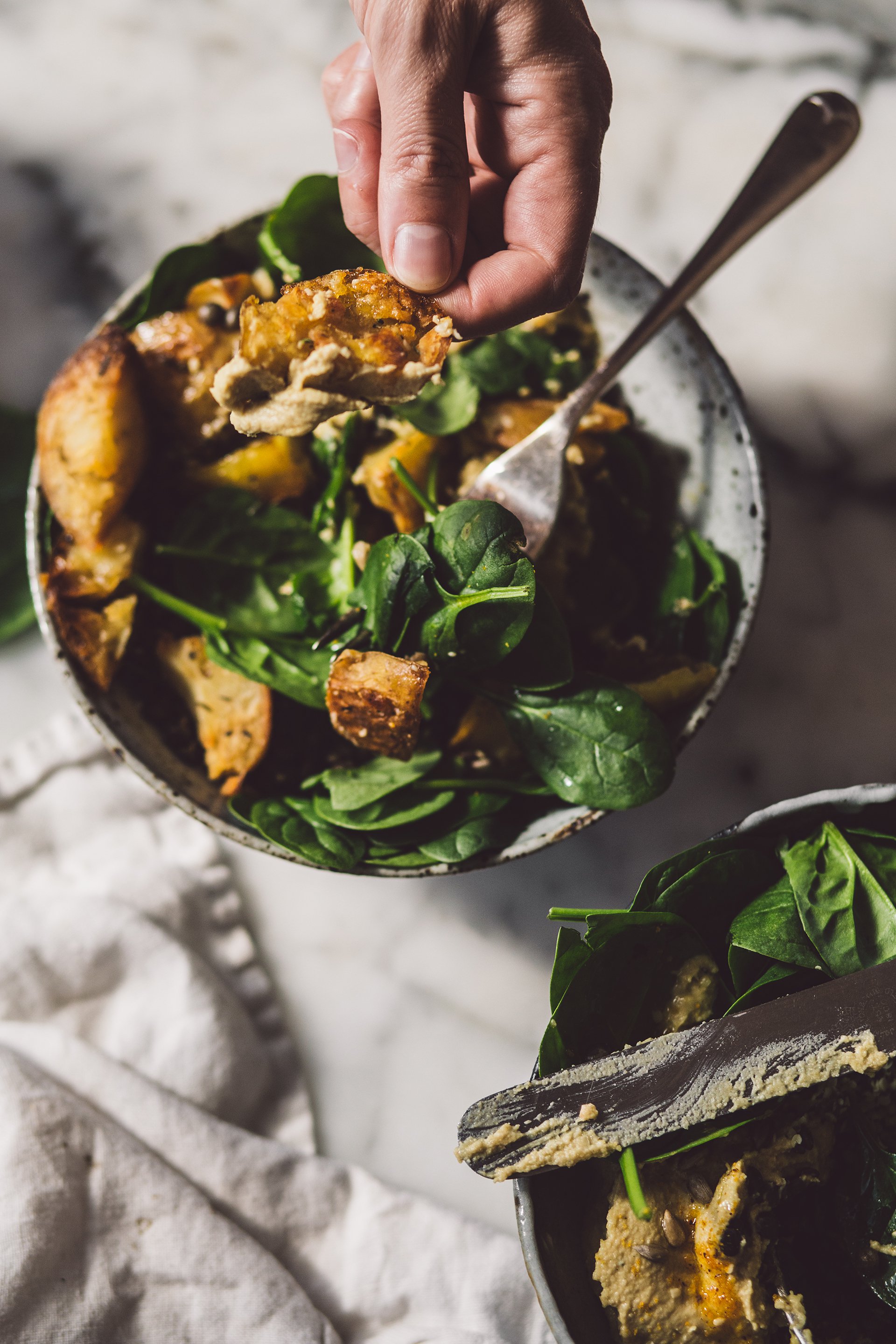Plant foods high in iron
Use this list of high iron foods to guide you towards reaching your daily required intake. Stock your pantry, embrace soaking your legumes create balanced meals at a moment’s notice.
Soy All the ways! Tofu scrambled on toast, pan fried cubes tossed through noodle bowls and big salads. Tofu is such a sponge for flavour. My partner and I love tempeh pan-fried with liquid smoke and sea salt. Tempeh is for nights when you feel like something more substantial.
— Tofu: 6.6 mg per ½ cup
— Tempeh: 4.5 mg per cup cooked
Pulses Aside from the high-quality plant protein, any meal with a base of beans will add fibre, minerals, phytonutrients and antioxidants. Soak and cook in batches to have on hand throughout the week keeping iron intake in check. Make hummus.
— Lentils: 6.6 mg per cup cooked
— Kidney beans: 5.2 mg per cup cooked
— Chickpeas: 4.7 mg per cup cooked
— Lima and soy beans: 4.5 mg per cup cooked
— Black and pinto beans: 3.6 mg per cup cooked
Vegetables We advocate for a plant-based diet — the more whole, organic and fresh plants you get into your body every day, that means the more essential nutrients you're getting like phytonutrients, electrolytes, vitamins, minerals, healthy fats, water and fibre — and these contain the most iron. Incorporate the following where ever possible.
— Spinach: 6.4 mg per cup cooked
— Swiss chard: 4.0 mg per cup cooked
— Peas: 2.5 mg per cup cooked
— Brussels sprouts: 1.9 mg per cup cooked
— Potato with skin: 1.7 mg per average sized 200 gram potato
— Bok choy: 1.8 mg per cup cooked
— Broccoli: 1.0 mg per cup cooked
— Kale: 1.0 mg per cup cooked
Nuts, seeds and grains Batch cook and keep containers of cooked grains on hand to add to salads throughout the week — include quinoa and millet where you can. Anything else listed here makes a welcome addition to meals. Ground-up cashews with nutritional yeast being the Parmesan for the plant-based world. Either blended into hummus or whisked into dressings, tahini is the greatest thing to ever happen to a big bowl of vegetables. And, I’m always eating oats.
— Oats: 3.3 mg per cup
— Quinoa: 2.8 mg per cup cooked
— Tahini: 2.7 mg per 2 tablespoons
— Hemp seeds: 2.38 mg per 3 tablespoons
— Cashews: 2.0 mg per 1/4 cup
— Bulgur: 1.7 mg per cup cooked
— Sesame seeds: 1.2 mg per 2 tablespoons
— Sunflower seeds: 1.2 mg per 1/4 cup
— Almonds: 1.3 mg per 1/4 cup
— Millet: 1.1 mg per cup cooked
Fruits Pureed with water or prepared as a concentrate you can drink goji on its own or add it to homemade almond milk. Blend watermelon, make your own juice and reach for raisins, apricots for a natural sugar high. Everything adds up.
— Goji berries: 1.7 mg per 5 tablespoons
— Raisins: 1.5 mg per 1/2 cup
— Apricots, dried: 1.7 mg per 1/2 cup
— Watermelon: 1.4 mg per 4 cups diced
I tend to think of my meals as equations. I would not say I obsess, however planning what groceries to purchase, what to keep on hand and how to best store and prepare foods that create radiance — that is how I am able to create vibrant health and have a flow of delicious meals.
My partner and I are creatures of habit and as such, on any given day, the contents of our refrigerators remain somewhat consistent. Led by the seasons, most lunches, dinners are a variation on this big salad that contains 12.93 mg of iron per serving.
With a grounding base of lentils (1.65 mg per 1/4 cup) and kidney beans (1.3 mg per 1/4 cup) and loads of sturdy greens like spinach (3.2 mg per 1/2 cup cooked), a half broccoli (1.0 mg per cup cooked). Toss through some pan fried tempeh (2.2 mg per 1/2 cup cooked). I would also include generous spoonfuls of hummus (2.0 grams per 1/2 cup), and hemp seeds (1.58 per 2 tablespoons).
And more with hospitality doors closed, and more time spent at home, this provides more of us with the opportunity to focus on quality ingredients as well as the energy of food preparation. For many, I would also like to think there would be this realisation that money spent on eating out could be invested in higher quality produce, organic and being able to spend more on items they might not in their day-to-day — fermented sourdough, tempeh, good quality olive oil.





